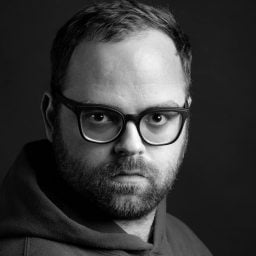Art & Exhibitions
Rauschenberg Foundation Announces Suite of Shows to Mark the Artist’s 100th Birthday
The organization is also launching dozens of centennial grants and institutional gifts.
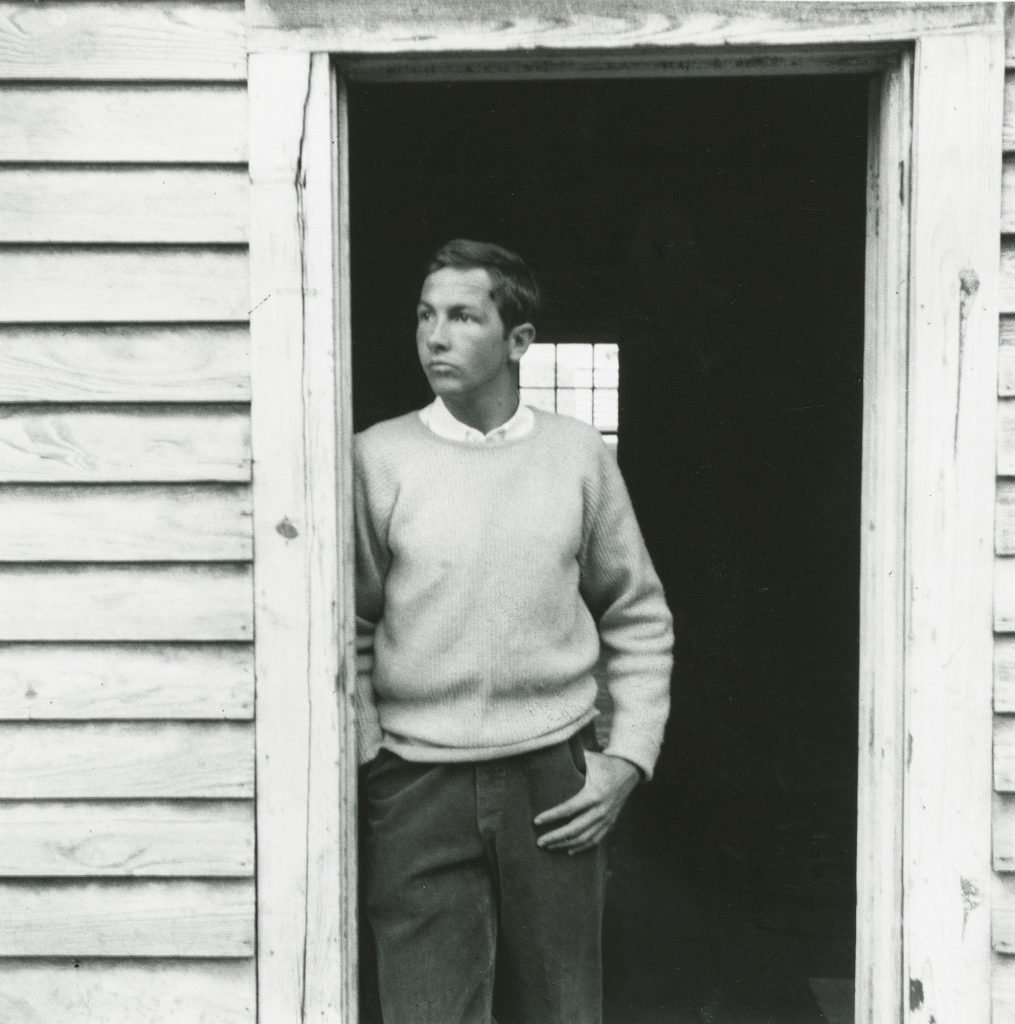
The Robert Rauschenberg Foundation is marking the artist’s 100th birthday with a slate of international events and exhibitions, as well as a series of grant-making initiatives. Launching in 2025 and continuing through 2026, the centennial activities will aim to highlight Rauschenberg’s forward-thinking ideas on art, technology, environmentalism, and social justice.
A genre-spanning giant of American postwar art, Rauschenberg, who died in 2008, is best known for his iconic “Combines” that blend the disciplines of painting and sculpture. He was also a firm believer in art as a catalyst for social change.
“Rauschenberg’s work broke boundaries and embraced the spirit of experimentation—qualities that remain profoundly relevant to artists and society today,” said Courtney J. Martin, the foundation‘s director. “This milestone allows us to reengage with his vision through fresh perspectives, reaffirming his role as a catalyst for innovation, and a beacon for social progress.”
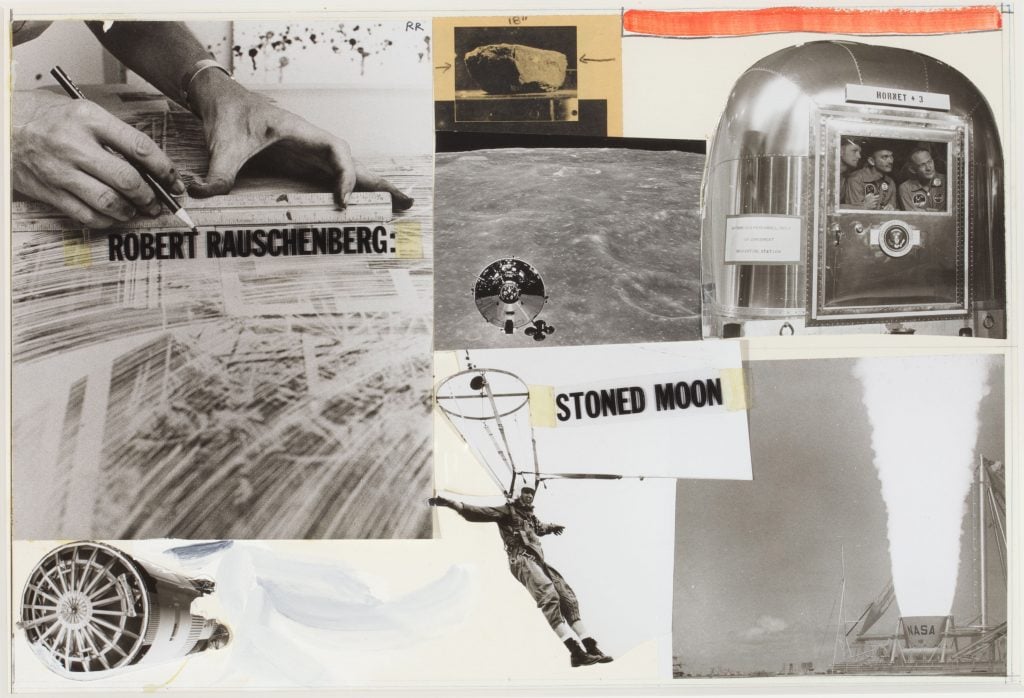
The artist’s Stoned Moon Book (1970) will be included in “Five Friends.” Courtesy Robert Rauschenberg Foundation
The foundation has helped organize major exhibitions of his work at seven institutions across five countries. The first of these is “Five Friends,” which will go on view at the Museum Brandhorst in Munich, Germany in April 2025 before traveling to Cologne’s Museum Ludwig, which was the largest collector of his art in Europe while he was alive. It highlights Rauschenberg’s collaborations with other major artists of the time, including Cy Twombly, John Cage, Jasper Johns, and Merce Cunningham.
“This show really talks about that postwar period and the fact that there is this group between Abstract Expressionism and minimalism and that they share relationships with both camps,” Martin said. “But they’re also really doing their own thing. They’re the successors to one, the precursors of the other.”
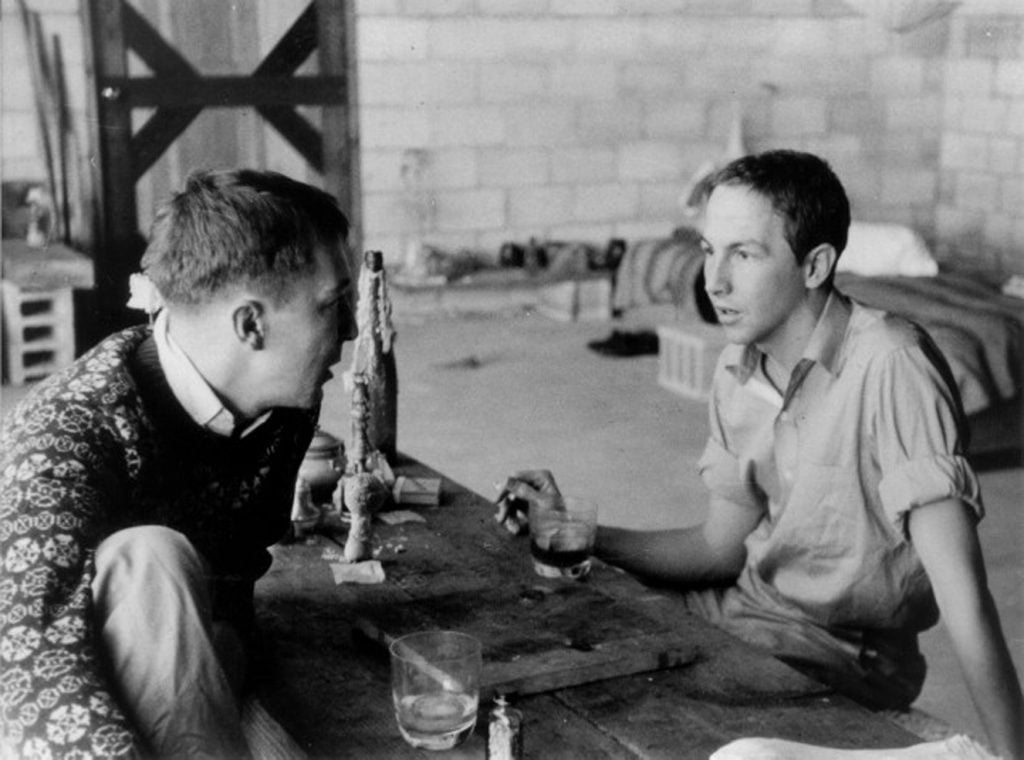
Rauschenberg and Jasper Johns at Louis and Fance Stevenson’s home
“somewhere up the Hudson”, 1954. Photo: Rachel Rosenthal, Courtesy Robert Rauschenberg Foundation
Two concurrent exhibitions will pay tribute to the artist’s use of photography, which began with his time at Black Mountain College between 1948 and 1952 and continued as his career gained steam during the mid-1950s in New York. “Robert Rauschenberg’s New York: Pictures from the Real World,” opening in September at the Museum of the City of New York will be followed by “The Use of Images,” opening in October at the Fundación Juan March in Madrid, which brought the first exhibit of Rauschenberg’s work to Spain in 1985.
Martin also noted that the artist’s extensive travels in Asia influenced his practice, from multiple trips to Japan beginning in the mid-1960s to a residency in India in 1975 and beyond. This theme runs through an upcoming exhibition at M+ in Hong Kong, opening in November 2025. The show is rooted in a program Rauschenberg personally developed shortly after his first trip to China in the 1980s, called the Rauschenberg Overseas Culture Interchange (ROCI), which was an effort to spark international dialogue using art.
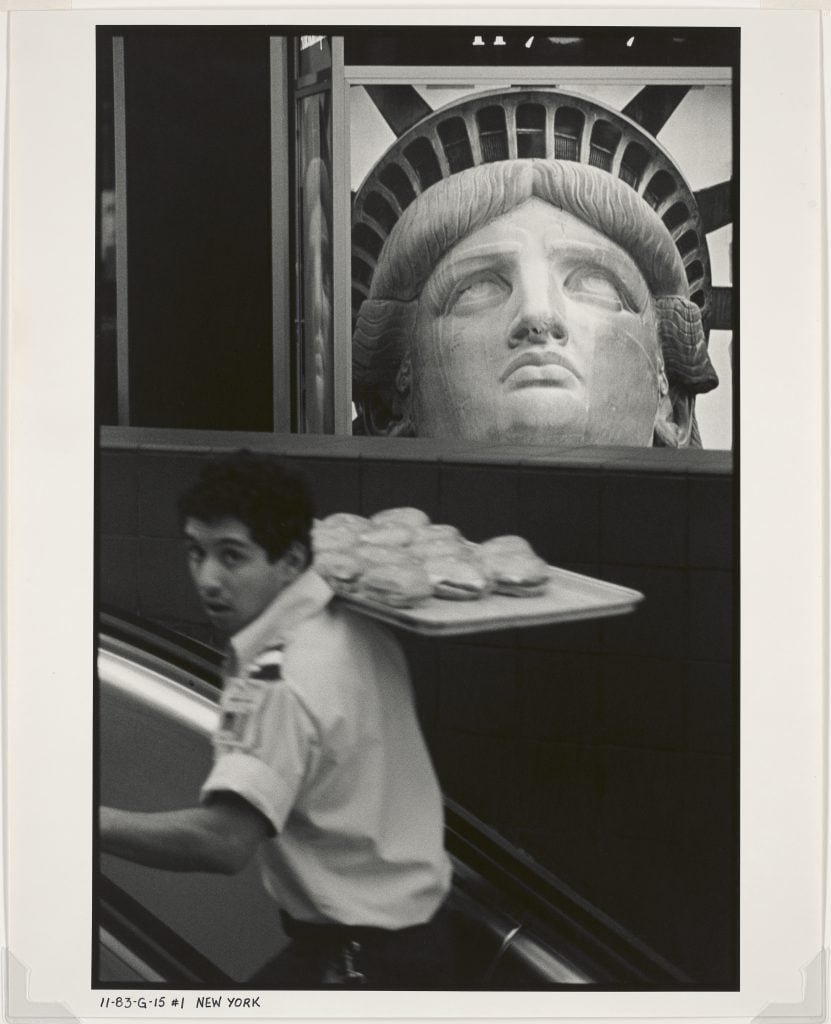
Robert Rauschenberg, New York (1983).
“He was one of the first Western artists to show in China and becomes a huge influence for a generation of Chinese artists in the 1980s,” Martin said. “Just to give you a sense of what that would mean, many of those artists saw Rauschenberg before they saw Picasso.”
Other confirmed institutional exhibitions marking the artist’s centenary include “Fabric Works from the 1970s” at the Menil Collection in Houston (September 19, 2025–March 1, 2026), which explores his interest in dance and costuming, and “Image and Gesture” at Austria’s Kunsthalle Krems (March–October 2026).
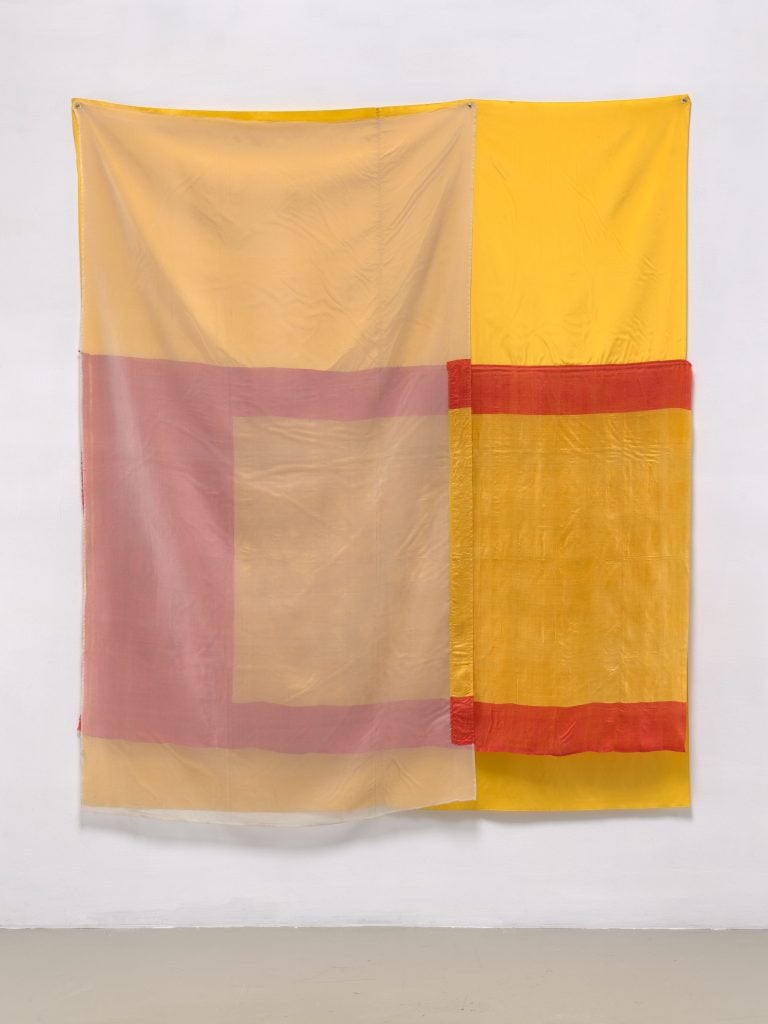
Robert Rauschenberg, Mirage (Jammer), 1975. Robert Rauschenberg Foundation. © Robert Rauschenberg Foundation. Photo: Ron Amstutz
While one aspect of the foundation’s work is to support Rauschenberg’s legacy through research and exhibitions, another is philanthropically supporting the causes he held dear. Rauschenberg started an organization called Change Inc., which aimed to provide artists with direct monetary support through perils including medical and housing emergencies, as well as the loss of their studios.
To further the artist’s philanthropic spirit, the foundation will fund a round of centennial grants. To date, 22 institutions are confirmed to receive support related to programming, scholarship, and restoration. Among the recipients are Guild Hall and the Trisha Brown Dance Company in New York, the Honolulu Museum of Art, Stockholm’s Moderna Museet, and the Vancouver Art Gallery.
Several academic museums have also received grants, such as New York University’s Grey Art Museum and the Sheldon Museum of Art at the University of Nebraska. Other institutional grants and gifts will be announced in the coming months.
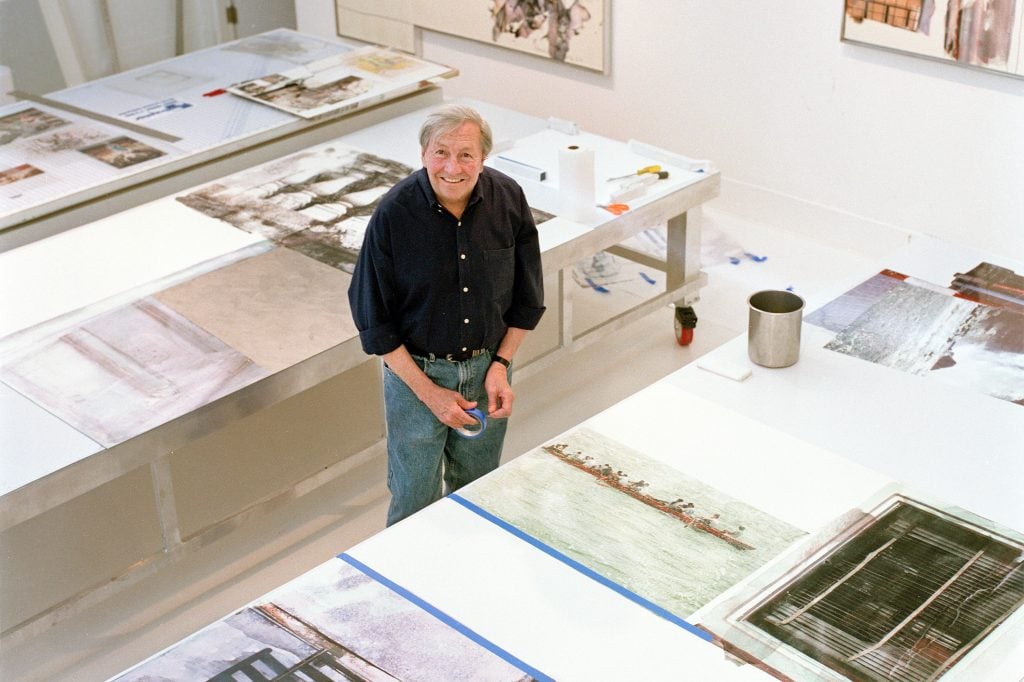
Robert Rauschenberg working on the Short Stories series at his studio,
2000. Photo: Ed Chappell, ©Robert Rauschenberg Foundation
The foundation is also launching the first volume in its pioneering digital catalog raisonné and the first book collecting writings by Rauschenberg. A new book of Rauschenberg’s writings will debut in October, titled I Don’t Think About Being Great: Select Statements and Writings. Rauschenberg himself had set aside most of the selected writings before his death, Martin said.
“He did not publish any writing in his lifetime about his own work. So, this is really, truly revelatory,” she said. “One of the things that emerges out of our book is that Rauschenberg was incredibly funny.” The publication is spearheaded by Francine Snyder, the foundation’s archivist, and will also include writings by artist Martha Tuttle.

